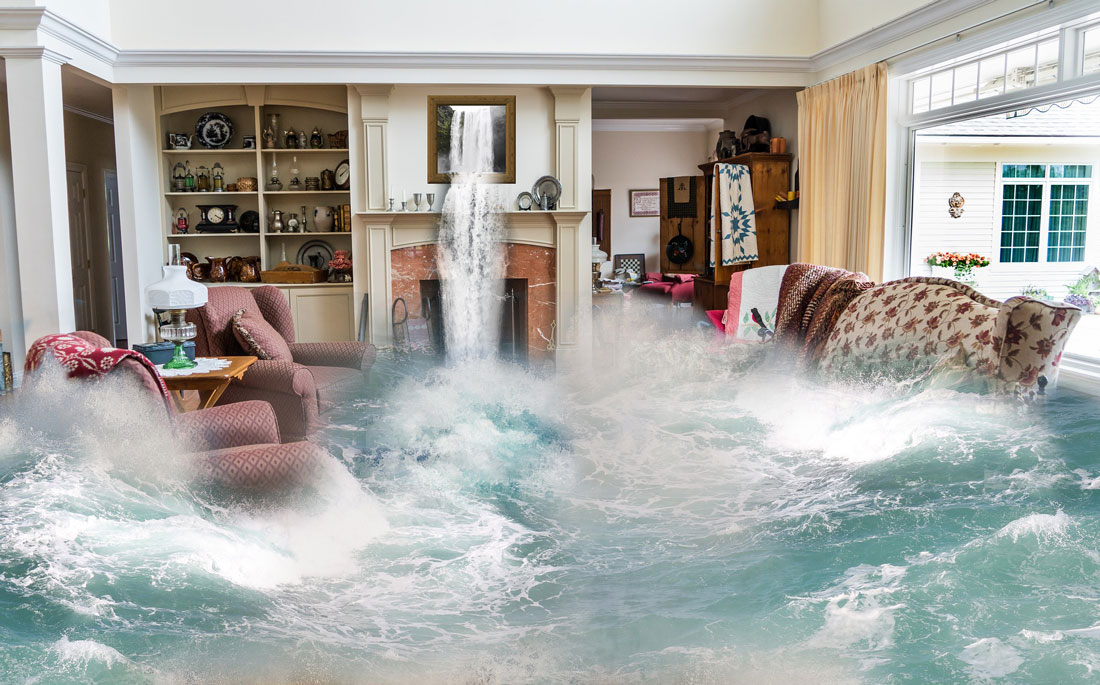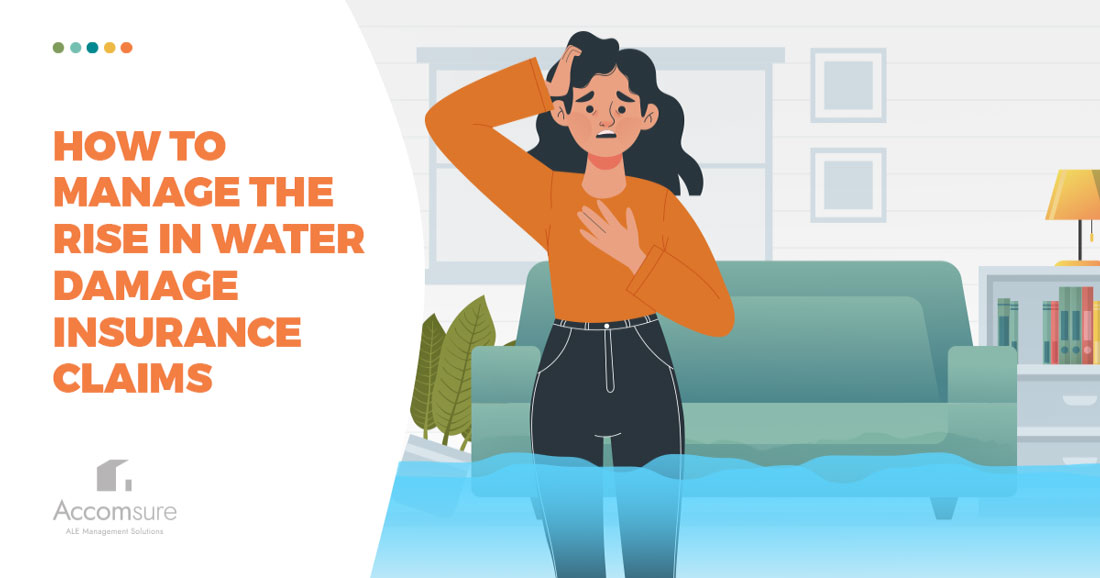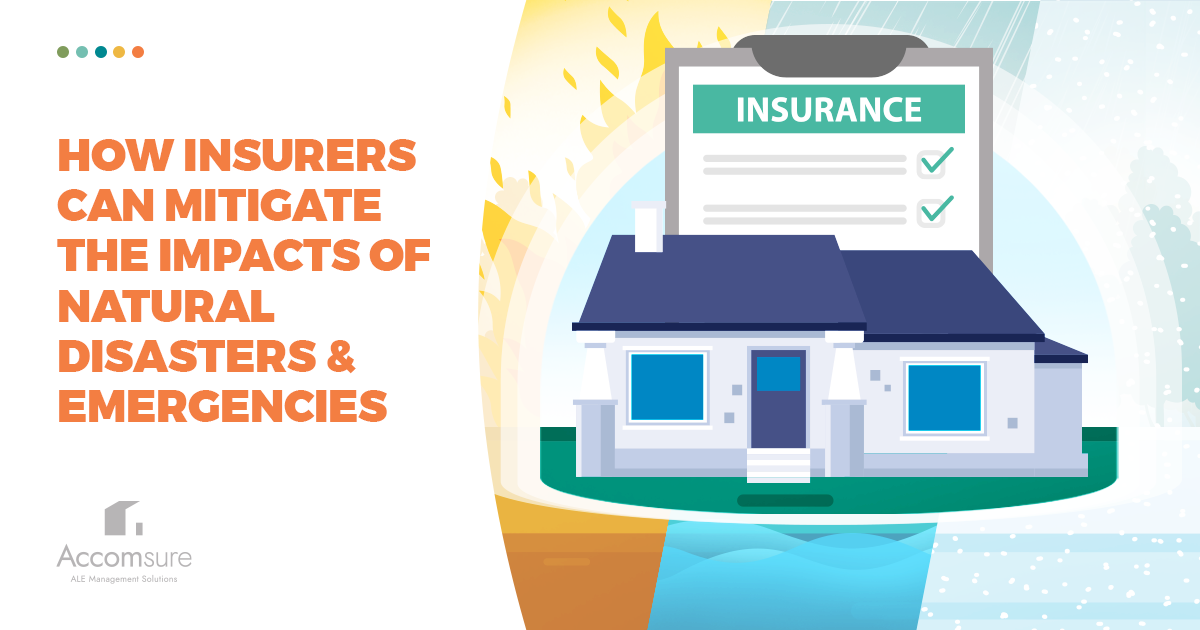The Rise in Water Damage Insurance Claims: Everything Insurance Companies Need to Know
Did you know water damage is the most common cause of damage in homes across Canada?
From leaky roofs to massive city-wide floods, policyholders across the country are constantly battling with keeping their homes dry. Water damage is not just a small nuisance to policyholders. If left unaddressed, even a small leak can result in serious damage that displaces families and costs insurance companies a pretty penny.
Unfortunately, recent reports show that water damage insurance claims have only continued to rise in recent years. So, what can you do to limit claim costs and avoid overworking your adjusters?
In this article, we’re sharing everything insurance companies need to know about residential water damage in Canada, including statistics, common causes, and types of damage. Keep reading until the end of this article to find out how you can protect your bottom line and reduce adjuster workloads despite the fact that water damage claims are continuing to rise.
Statistics on Residential Water Damage in Canada

The following statistics prove that water damage is not just a significant concern for policyholders and insurance companies alike but also that this concern has been increasing in severity in recent years.
- Water damage accounts for about 50% of home insurance claims costs in Canada. (Canadian Underwriter)
- In a study conducted by Desjardins Group, 26% of over 3,000 respondents reported having at least one water damage incident in their homes. (Canadian Underwriter)
- In 2014, the average cost of water damage claim costs was $16,070. (Park Insurance)
- In the last decade, water damage claims costs in BC have risen 84%. (Park Insurance)
- Since 2015, water damage claims in Canada have increased by over 50%. (Canadian Underwriter)
Although water damage claims are increasing, the following statistics also prove that a lot of water damage is preventable. Many policyholders just lack the knowledge they need to reduce their risks.
- About 93% of water damage is preventable. (Arguello Hope)
- In the same study conducted by Desjardins Group, 43% of respondents were unaware of how to prevent water damage in their homes. (Canadian Underwriter)
The Most Common Causes of Residential Water Damage

So, you know that water damage is a concern, but where is the majority of this damage coming from? In the following sections, we’ll dive into four of the most common causes. In addition to the ones listed below, your policyholders may also face water damage due to causes like AC condensation, blocked drains, water heater leaks, and more.
Severe Weather
Due to climate change, severe weather events like thunderstorms, hurricanes, or flash floods are a big threat to the insurance industry. When severe weather strikes and rain pours down on your policyholders’ homes, there’s not much that policyholders or adjusters can do to soften the blow, especially for those in flood zones.
In these instances, insurance companies are likely to see a surge in home insurance claims, with some policyholders left feeling hopeless without a place to spend the night.
How do you manage the influx of claims along with the stressed policyholders in desperate need of temporary accommodation? We’ll discuss this further at the end of the article!
Frozen & Leaking pipes
Canada is no stranger to cold winter weather. Unfortunately, this often causes pipes to freeze and burst, leading to severe water damage. Leaking pipes are particularly concerning when they’re located in walls or beneath foundations. This leads to greater damage and costly repairs that insurance companies often need to shoulder.
There are several ways that policyholders can prevent pipes from freezing, such as insulating pipes, letting faucets drip, or sealing cracks in windows or door frames. They just need to be properly educated.
Broken Washing Machine Hose
Many people don’t know that some washing machine supply lines are more at risk of rupturing than others. Rubber or PVC supply lines wear out more easily than those made from stainless steel. When they break, these supply lines can flood a laundry room within minutes!
Clogged Gutters
As part of your policyholders’ spring cleaning routine, it’s essential that they clean out their gutters. When gutters are blocked by leaves and other debris, water cannot flow away from the home. Instead, the water runs directly down the house and can cause serious damage to the walls, floors, and foundation. It’s a pretty simple chore, but many policyholders still miss this task, leading to costly damage and repairs when the next storm hits.
The Types of Damage Caused by Water
Water can lead to a lot of costly damage in the home, but two types of damage are particularly troublesome. If your policyholders experience the following types of water damage, they might need a different place to spend the night, week, or even the next few months while their home is repaired.
Mould & Mildew
When water seeps into a home, it can lead to unsightly and dangerous mold with the potential to create health problems for your policyholders. These health problems include minor reactions like sneezing or a runny nose or more dangerous reactions like shortness of breath Exposure to mould is especially concerning for those with respiratory conditions and other risk factors.
If your policyholders have mould in their homes due to water damage, they may require a new place to stay until the mould is removed.
Structural Damage
Perhaps even more concerning than mould is when water damage leads to structural damage in homes. When structural damage occurs, your policyholders are at risk of having their homes collapse.
As this is a significant safety concern, it’s essential that these policyholders are relocated to a safe location while their home is repaired.
How Water Damage Affects Insurance Companies
More water damage means more home insurance claims, greater costs, and increased adjuster workloads. Although most water damage is relatively minor, some water damage, such as damage involving mould or structural issues, may create an added challenge for insurers.
When policyholders are displaced from their homes, they are often stressed and confused, leading to even more work on behalf of the adjusters and higher claim costs. They may not know how to find temporary accommodation within their policy limits or accommodation that meets their unique needs. When policyholders have nowhere else to go, they go to their adjuster with all of their questions and concerns. But there’s a better way…
How Insurance Companies Can Keep Their Heads Above Water
Enter Accomsure.
When your policyholders are displaced and stressed, we’re prepared to step up and take on the workload. Accomsure can take on your policyholders’ accommodation needs so you can focus your attention on managing their claim. We’ll not only ensure your policyholders are completely satisfied, but we’ll also make sure to stay within their policy limits to reduce claim costs.
We can help you keep your head above water amidst rising water damage claims! Submit a claim today or contact us to learn more.




